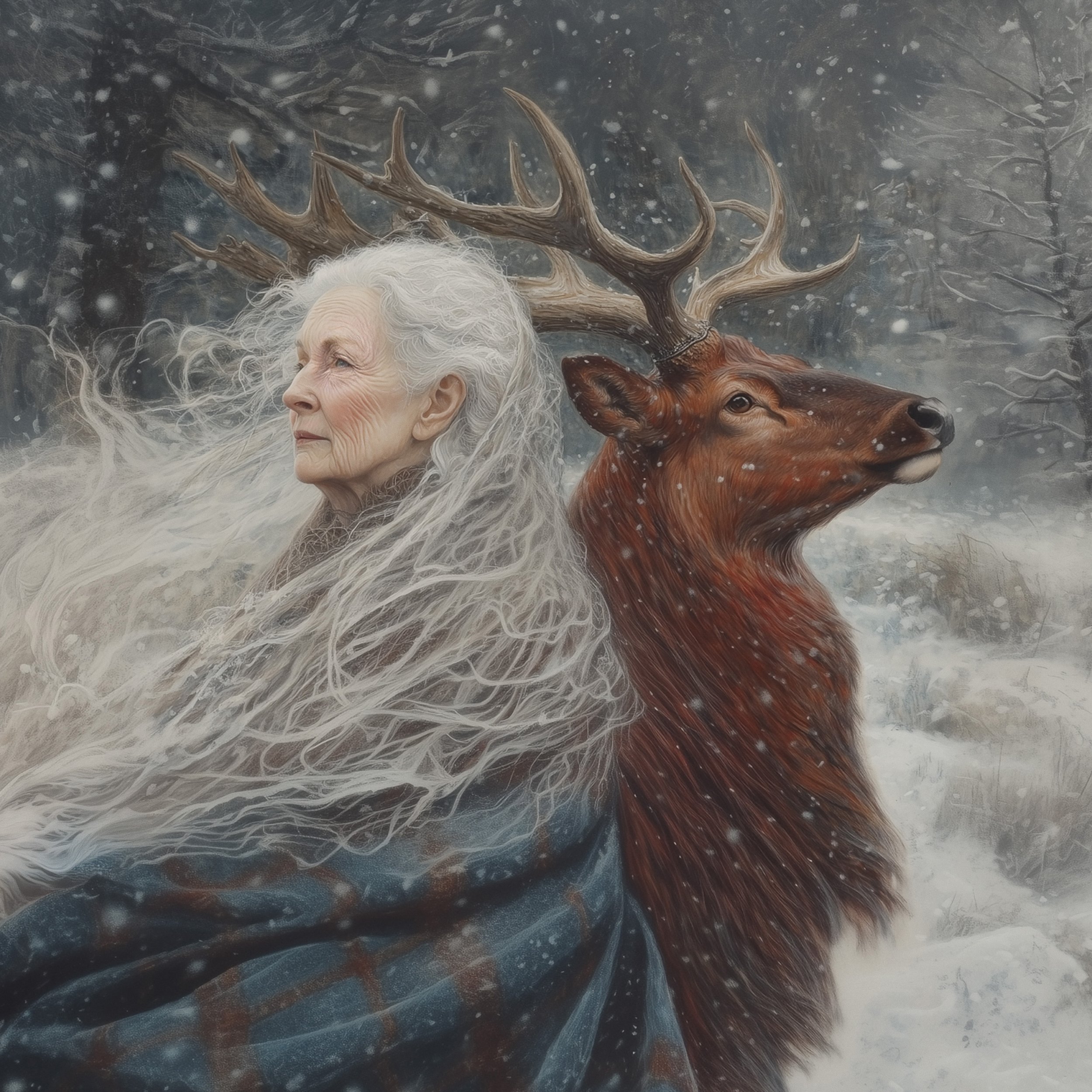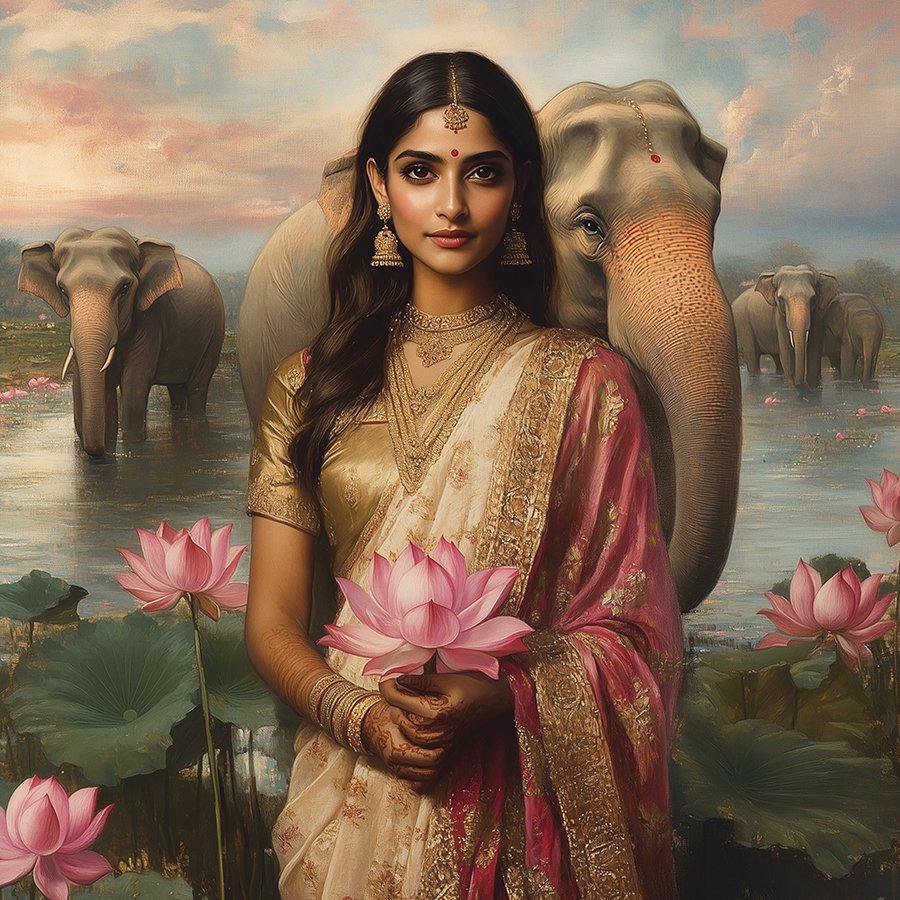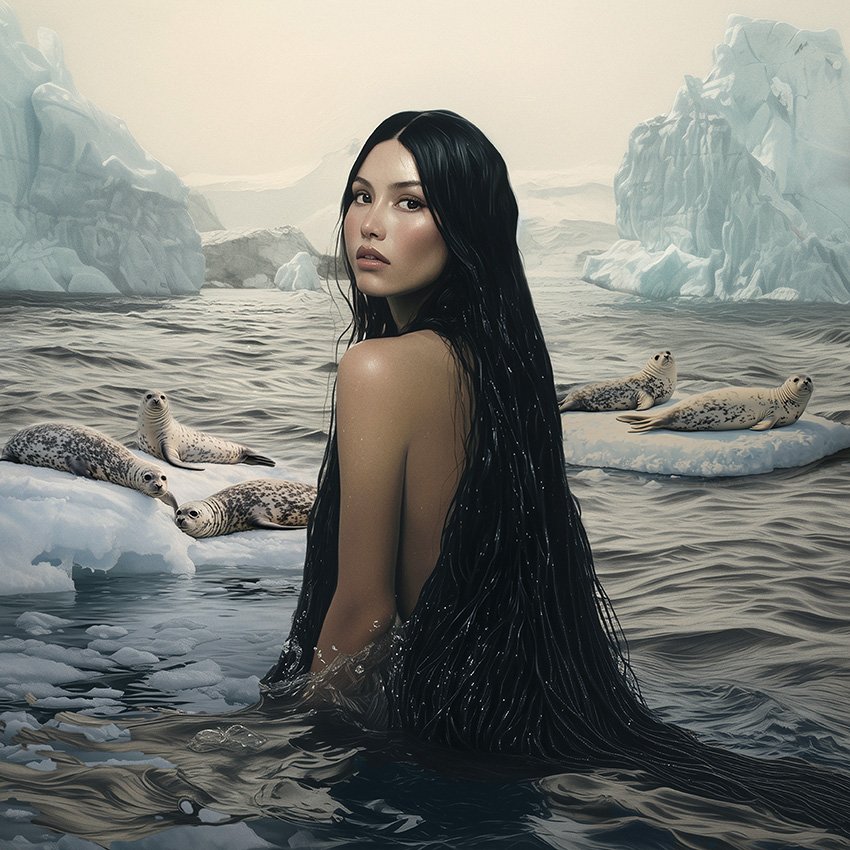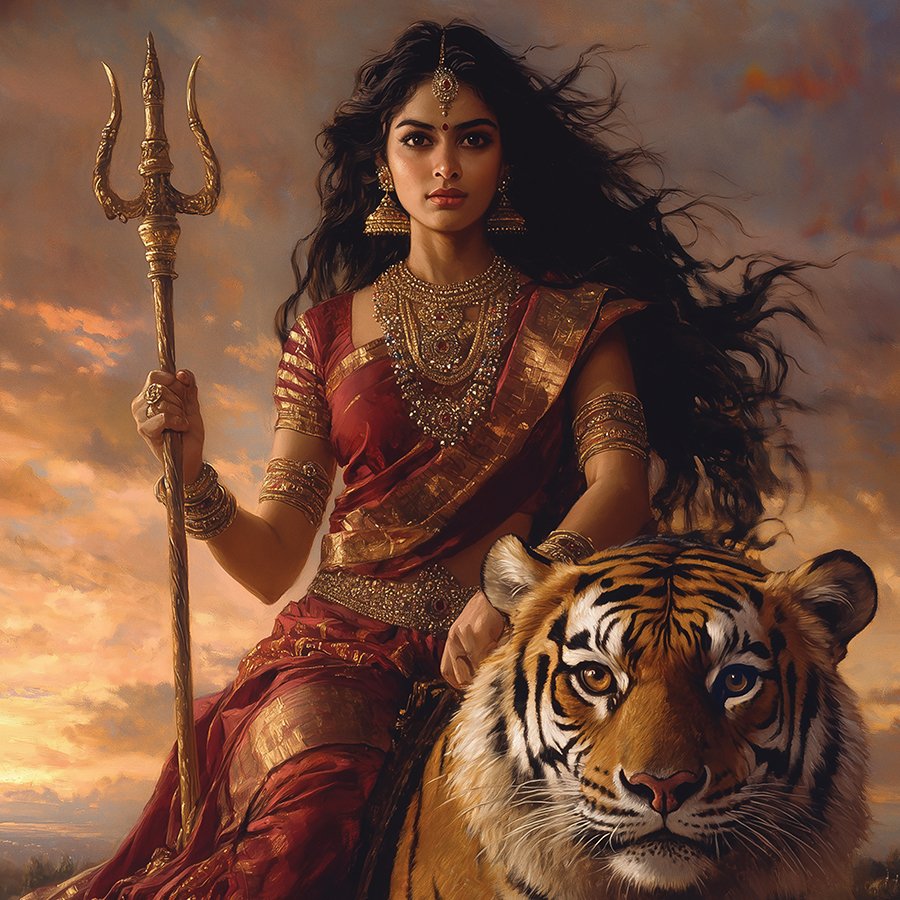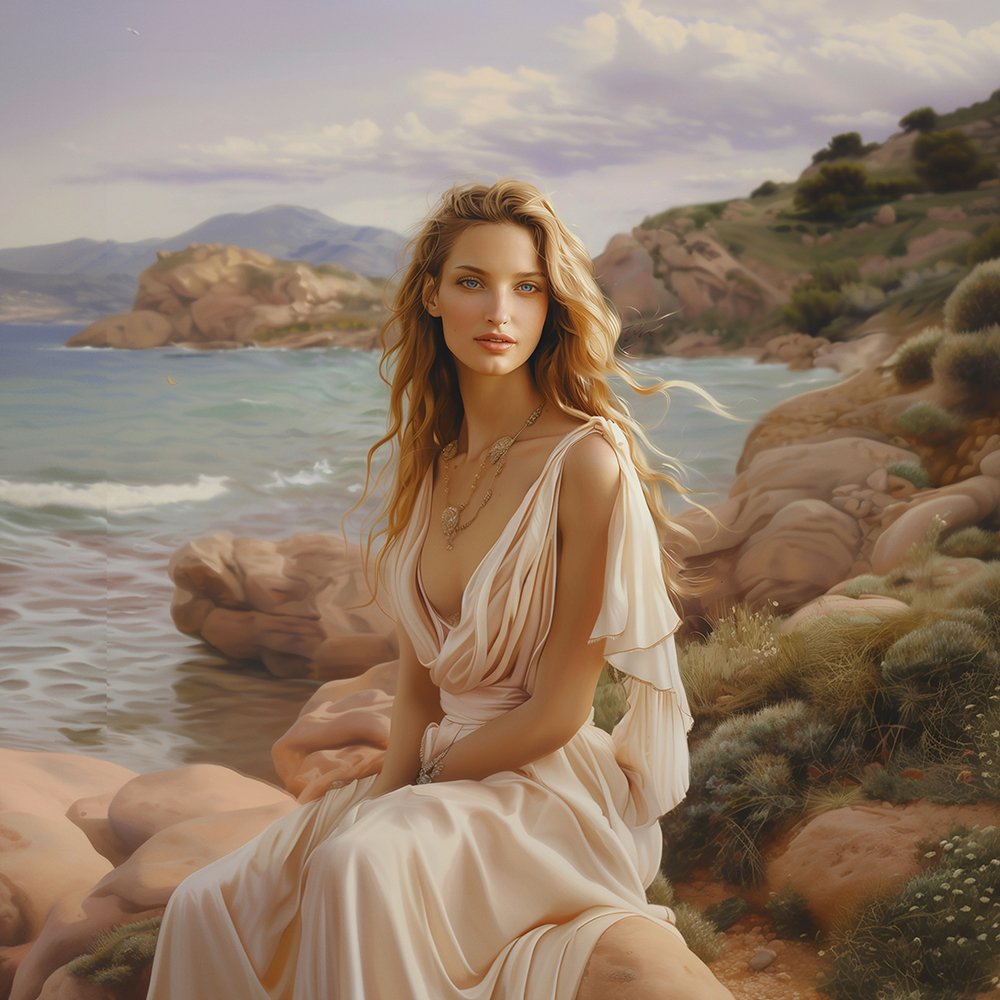Baba Yaga
Deep within the heart of Eastern European forests lies Baba Yaga, a figure whose eerie mystique has captivated generations. As a prominent example of the Crone archetype in Slavic folklore, Baba Yaga embodies the untamed beauty and inherent danger of the wilderness. Described as an elderly woman with iron teeth and wild, iron-gray hair, she commands fear and respect with her penetrating gaze and metal-clinking voice. Her attire, consisting of tattered rags, and her gnarled staff reflect her deep connection to the forest, while her hut on giant chicken legs adds a surreal, terrifying aspect to her domain, showcasing her role as guardian of the liminal space between life and death.
Oshun
Oshun is a revered goddess within the Yoruba pantheon, embodying love, beauty, fertility, and abundance. Created by the high god Olorun to infuse the world with joy and life, Oshun is celebrated for her grace and compassion, acting as a protector of women, children, and the elderly. She holds dominion over rivers and waterways, symbolizing prosperity and the fertile land nurtured by these waters. Her worship persists in Yoruba traditions and the African diaspora through vibrant rituals, music, and dance, sustaining her legacy as a potent symbol of nurturing and life.
Ma’at
Ma’at’s is one of the more enigmatic deities in Egyptian mythology. She isn’t just a goddess she is the embodiment of truth, justice, balance, and cosmic order. Her presence kept chaos at bay and offered a path to harmony. In an age overwhelmed by noise, imbalance, and distortion, Ma’at speaks through conscience, reminding us that true justice is rooted in integrity and that the foundation of order is always internal.
Ishtar/Inanna
Originating in ancient Mesopotamia, Inanna, also known as Ishtar, embodies love, fertility, war, and the cycle of creation and destruction. As Queen of Heaven and Earth, she reflects both fierce power and deep vulnerability. Her descent into the Underworld symbolizes profound transformation.
The Cailleach
In the heart of Winter, the Cailleach emerges as the ancient goddess of storms and transformation. Her presence reminds us of the power in stillness and the wisdom found in the cycles of nature, urging us to honor the quiet depths before the return of Spring.
Sedna
In the depths of Arctic waters, Sedna reigns as the resilient sea goddess of Inuit mythology. Her tale of betrayal and transformation speaks to the cycles of loss and rebirth. As winter’s stillness envelops us, Sedna’s story reminds us of the strength found in surrender and the power that emerges from embracing our deepest wounds.
Hera
Hera, the revered queen of the Olympian gods, embodies sovereignty, commitment, and the complexities of partnership. Often overshadowed by tales of jealousy, her narrative invites a deeper exploration of divine feminine power and the sacredness of vows. Through her, we examine the balance between autonomy and union.
Sekhmet
My rekindled love for mythology was ignited by Sekhmet, the ancient Egyptian goddess of the scorching desert sun, plague, chaos, war, and healing. Her dual nature reflects the balance between creation and destruction, making her a profound figure in both ancient rituals and modern interpretations.
Artemis
Artemis, the Greek goddess of the hunt, wilderness, childbirth, and virginity, emerges as a formidable and influential figure, with origins in pre-Greek cultures of Asia Minor. Her association with the moon and her role in fertility and healing underline her spiritual significance, while her influence extends to modern Pagan and feminist movements, symbolizing female strength and autonomy.
Rhiannon
Rhiannon, the enigmatic horse goddess of Welsh lore, emerges from the mists of Annwn, the Otherworld, riding a white steed that no mortal can catch unless she wills it. Choosing love on her own terms, she defies expectations, only to face trials that test her strength and grace. Through unjust accusations and profound loss, Rhiannon endures, embodying the enduring power of the divine feminine and the mysteries that lie between the seen and unseen.
Hestia/Vesta
Hestia, the gentle guardian of the hearth, embodies the sacred flame that warms both home and spirit. Her quiet strength reminds us of the power in stillness and the importance of tending to our inner sanctuaries with devotion and care.
Isis
As the Mid-Atlantic bids farewell to summer’s heat and humidity, a cooler breeze signals the approach of autumn—a season rich with change and renewal. It brings to mind the cycles of life and death, growth and decay, echoing the story of Isis, the Egyptian goddess of motherhood, magic, and transformation. Her story is one of unwavering devotion and transformative power, guiding us to embrace our own cycles of loss and renewal with grace and resilience.
Durga
Durga, the fierce and powerful goddess of Hindu mythology, embodies the ultimate power of the divine feminine, riding into battle on a lion or tiger with unmatched grace and strength. Her story, rooted in the cosmic struggle between good and evil, serves as a timeless reminder of the indomitable force of righteousness and the inner strength that lies within us all. As a protector and spiritual mother, Durga's energy resonates far beyond myth, inspiring those who seek courage, transformation, and empowerment. Her legacy is a living narrative that continues to guide and uplift, reminding us that with unwavering faith, good will always triumph over evil.
Aphrodite
Aphrodite, the iconic goddess of love, beauty, and desire, transcends mythology to embody the essence of passion and devotion. Born from the sea foam in a dramatic tale of divine retribution, Aphrodite’s influence extends far beyond her origins, weaving through the fabric of ancient and modern cultures alike. From her passionate affairs with gods and mortals to her role as a muse for artists and lovers, Aphrodite’s legacy reminds us of the enduring power of love and beauty. Her myths and presence continue to inspire, offering timeless insights into the complexities of desire and the transformative nature of love.







